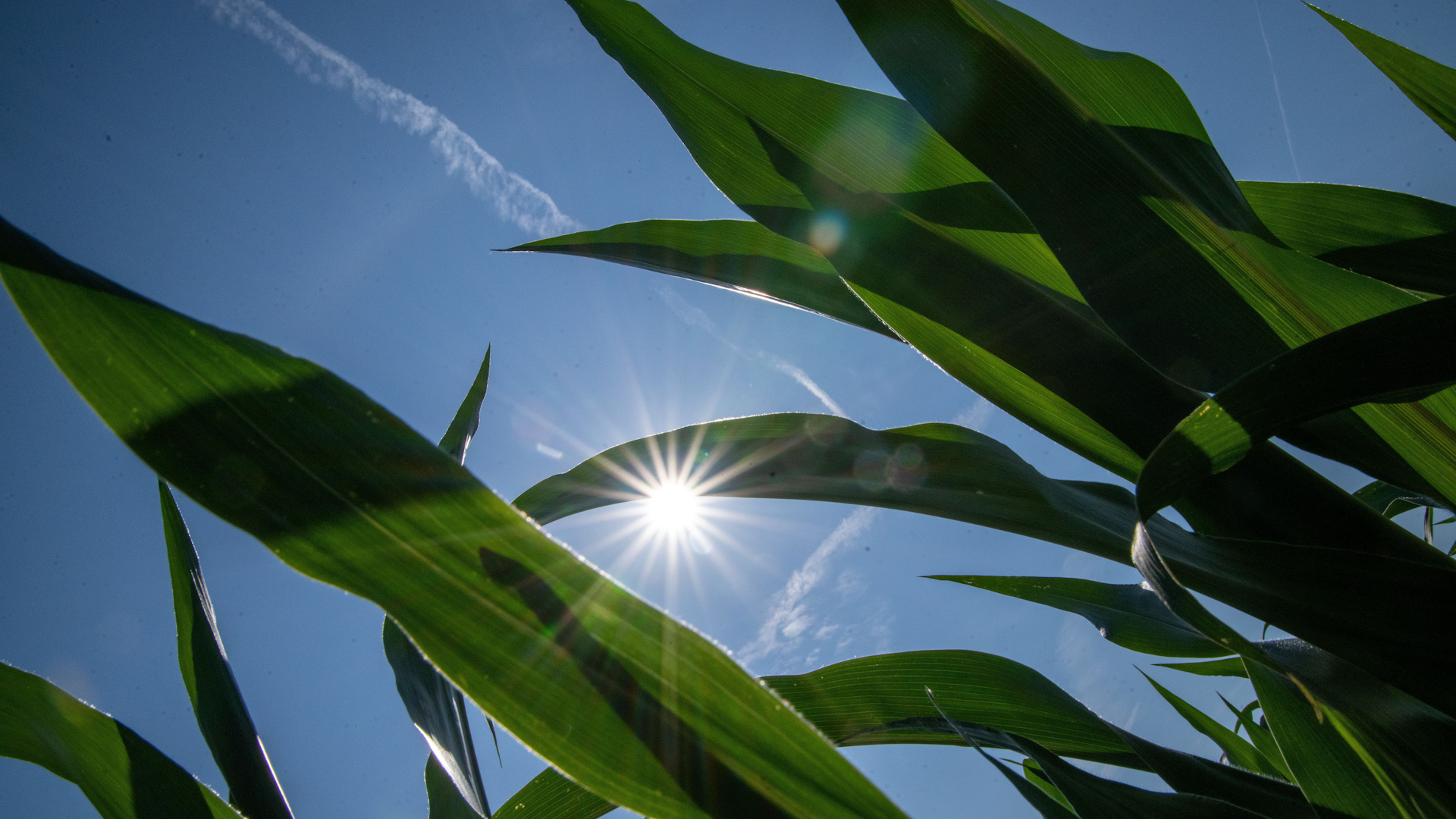
A SIGNIFICANT PORTION OF THE MOST WIDELY PLANTED CROP IN THE UNITED STATES IS ACTUALLY USED TO HELP MAKE ENERGY.
BUT A RECENT STUDY IS LOOKING INTO IF THAT FARMLAND MIGHT BE BETTER SERVED PRODUCING A CLEANER TYPE OF POWER-
SOLAR.
EVERY YEAR, U.S. FARMERS PLANT ABOUT 90 MILLION ACRES OF CORN-
ABOUT 40 PERCENT OF WHICH IS USED TO CREATE ETHANOL- A KEY INGREDIENT IN GASOLINE.
RESEARCH FUNDED BY THE DEPARTMENT OF ENERGY AND PUBLISHED IN 2022 FOUND THAT THIS CORN-BASED BIOFUEL IS ACTUALLY WORSE FOR THE ENVIRONMENT THEN STRAIGHT GASOLINE.
ACCORDING TO THEIR DATA, ETHANOL PRODUCED WITH CORN IS ACTUALLY 24 PERCENT MORE CARBON-INTENSIVE-
WITH LAND USE CHANGES NEEDED TO GROW THE CROP BEING AMONG THE MAIN FACTORS CONTRIBUTING TO THAT HIGHER GREENHOUSE GAS OUTPUT.
THAT’S WHY THE CHAIR OF AGRICULTURAL AND RESOURCE ECONOMICS AT UC BERKELEY RECENTLY EXAMINED WHETHER THAT FARMLAND SHOULD INSTEAD BE USED FOR SOLAR POWER.
THE FINDINGS SHOWED SOLAR PANELS GENERATE APPROXIMATELY 12 TIMES MORE ENERGY PER ACRE THAN CORN KERNELS.
AND IN TERMS OF REVENUE, SOLAR IS ALSO 13 TIMES MORE PROFITABLE PER ACRE THAN CORN.
HOWEVER, WHEN FACTORING IN THE COSTS ASSOCIATED WITH BUILDING AND OPERATING A SOLAR PLANT-
VERSUS PLATING AND CULTIVATING CORN-
SOLAR PANELS GENERATE A LOSS OF 5,103 DOLLARS PER ACRE, WHILE CORN HAS A PROFIT OF 170 DOLLARS PER ACRE.
BUT, FEDERAL INCENTIVES PLAY A KEY ROLE IN SHIFTING THIS BALANCE.
FORMER PRESIDENT JOE BIDEN’S INFLATION REDUCTION ACT PROVIDES TAX CREDITS THAT SIGNIFICANTLY LOWER SOLAR PROJECT COSTS, MAKING THEM FINANCIALLY VIABLE.
UNDER THESE SUBSIDIES, SOLAR FARMS MAKE SUBSTANTIALLY MORE MONEY THAN CORN FARMING—1,580 DOLLARS PER ACRE COMPARED TO THAT PREVIOUS 170 DOLLARS PER ACRE MARK.
WHILE PRESIDENT DONALD TRUMP HAS ORDERED A 90 DAY HOLD ON INFLATION REDUCTION ACT FUNDING-
HIS ADMINISTRATION CANNOT COMPLETELY DISMANTLE THE RENEWABLE ENERGY INCENTIVES THAT THIS LEGISLATION PROVIDES WITHOUT AN ACT FROM CONGRESS.
SO, ACCORDING TO THESE STUDIES, SOLAR PANELS DO MAKE CLEANER, AND LARGER AMOUNTS OF ENERGY THAN CORN-
WHILE, THANKS TO GOVERNMENT FUNDING, THEY’RE MORE PROFITABLE TOO.
FOR MORE STORIES FROM THE U.S. ENERGY SECTOR, DOWNLOAD THE STRAIGHT ARROW NEWS APP AND SIGN UP FOR ALERTS FROM ME- JACK AYLMER.











